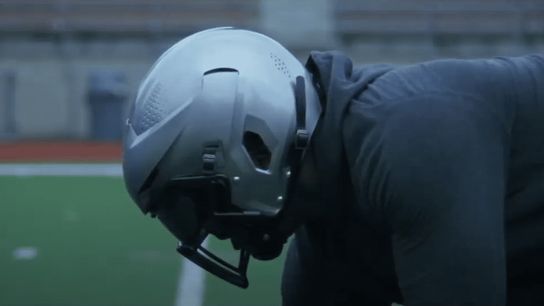The NFL will test a new helmet designed specifically for linemen.
"It's the stated goal of ours when we started down this road of helmet testing and better understanding concussions and on-field impacts that we would get to the place where helmets would be built for individual positions," NFL spokesperson Jeff Miller said Thursday.
Designed by Vicis, the Zero2 helmet Trench addition comes with add-ons to the front of the lid, where most linemen engage in head-to-head collisions on a regular basis. The NFL already uses the Zero2 helmet.
The Zero2 Trench has received approval by the National Operating Committee on Standards for Athletic Equipment, but still must receive a thumbs up from both the NFL and NFL Players Association, so it remains to be seen when the Trench will be seen on Sundays.
In addition to safety, each new helmet prototype must also pass an additional test, a bar that could be even higher to clear than increased protection for the brain -- it's gotta look cool. Look good, play good is not just a cliche in football, and players won't wear a helmet if they don't think it looks cool.
And the Trench passes that test, at least to this writer's eye. The modifications from a standard helmet are clear, but the new addition looks more like a fighter pilot helmet and less like the the double-lidded helmet former Buffalo Bill Mark Kelso used to wear.
https://www.youtube.com/watch?v=ON-18uqPBVI&feature=emb_logo
As part of the league's plan to develop specific helmets for each position, Miller told the Associated Press the NFL is analyzing prototypes that would protect quarterbacks from back-of-head helmets, which studies have shown generate the largest number of concussions for the position.
The Zero2 retails for $649 and the Trench version costs $749, so the current iteration is assuredly not a sport-wide solution. But as the technology progresses and capitalism does its thing -- the NFL also has contracts with Riddell, Schutt and Xenith, for example -- the hope is these new helmets will: A) prove to be effective at reducing head injuries, and B) become affordable for small college, high school and youth programs.
